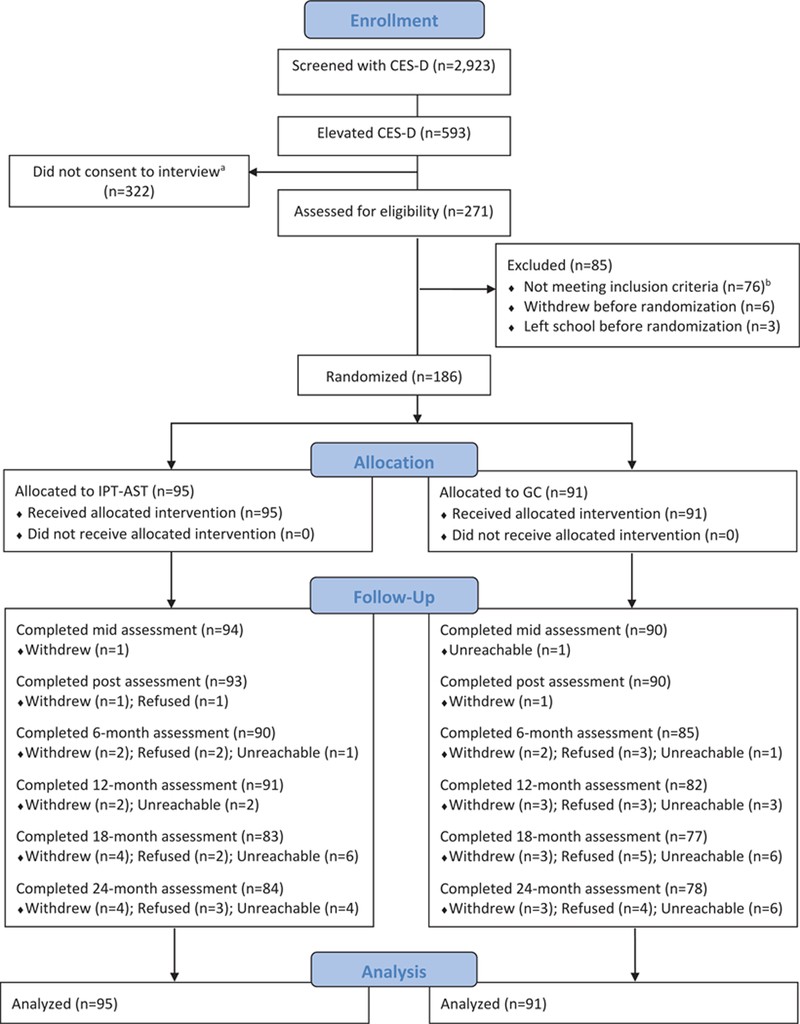Adolescence is a critical period for the development of depression, making it an ideal time for preventive interventions. This article compares the long-term effectiveness of two school-based depression prevention programs: Interpersonal Psychotherapy–Adolescent Skills Training (IPT-AST) and Group Counseling (GC). A clinical child psychologist examines the 24-month outcomes of a randomized controlled trial involving 186 adolescents with elevated depressive symptoms.
School-Based Depression Prevention: A Critical Need
Depression carries significant individual and societal costs, impacting academic performance, social relationships, and overall well-being. Early intervention and prevention are crucial in mitigating the long-term consequences of depression. Schools offer a unique opportunity to reach a broad population of adolescents, including those who may not have access to traditional mental health services.
Comparing IPT-AST and Group Counseling: Study Design
This study evaluated the long-term efficacy of two distinct depression prevention programs delivered in a school setting. IPT-AST, a program focused on improving interpersonal skills and relationships, was compared to GC, a more general counseling approach delivered by school counselors. Participants were randomly assigned to either IPT-AST, delivered by research clinicians, or GC, led by school counselors. Both programs included booster sessions to reinforce learned skills.
Measuring Effectiveness: Depressive Symptoms, Functioning, and Diagnoses
The study assessed changes in depressive symptoms using the Center for Epidemiologic Studies–Depression Scale (CES-D), overall functioning using the Children’s Global Assessment Scale (CGAS), and rates of depression diagnoses using the Schedule for Affective Disorders and Schizophrenia for School-Age Children (K-SADS-PL). Data were collected at baseline, mid-intervention, post-intervention, and at 6, 12, 18, and 24-month follow-up.
Findings: Short-Term Gains Fade Over Time
Initially, IPT-AST demonstrated significant advantages over GC in reducing depressive symptoms and improving overall functioning. However, these effects diminished over the 24-month follow-up period. While both groups showed overall improvements from baseline, GC participants experienced continued reductions in depressive symptoms and maintained stable functioning during the long-term follow-up. In contrast, IPT-AST participants showed a non-significant increase in depressive symptoms and a slight decline in functioning.
A Clinical Child Psychologist Analyzes the Results
Several factors may contribute to the diminishing long-term effects of IPT-AST. The active nature of the GC control condition, including the use of evidence-based techniques by some counselors and the ongoing availability of school counselors for support, may have played a significant role. The timing and structure of booster sessions, as well as the lack of individualization in prevention programs, are also potential contributing factors. A clinical child psychologist emphasizes the importance of tailoring interventions to individual needs and ensuring ongoing support.
Implications for Depression Prevention in Schools
This study highlights the potential of school-based depression prevention programs but underscores the need for ongoing support and individualized approaches. Training school personnel in evidence-based prevention strategies and developing flexible booster session protocols may enhance long-term outcomes. Future research should explore personalized prevention approaches that match interventions to specific risk factors. Despite the limitations, this study reinforces the critical role of schools in addressing adolescent mental health and the need for continued research in this area. A clinical child psychologist suggests that even short-term improvements in symptoms can have lasting positive effects. Early intervention and prevention remain vital in combating the significant burden of depression in young people.
